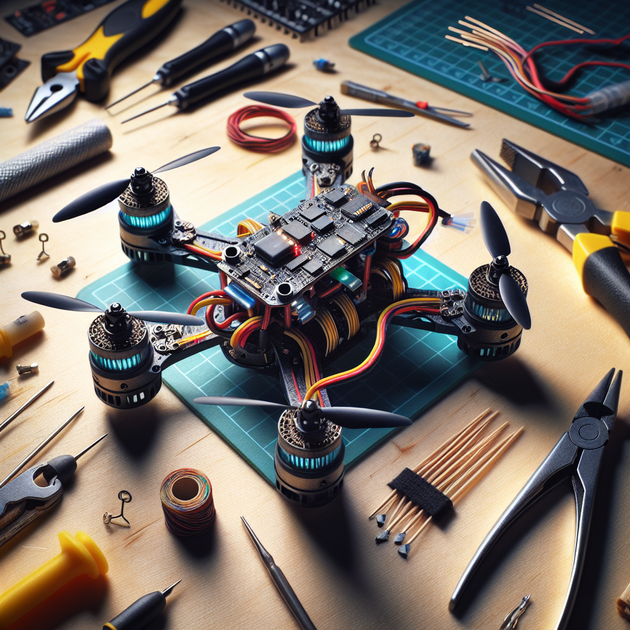What Makes This Drone Build Progress Stand Out?
Ever wondered how a homemade drone can fly without traditional moving parts on its wings? That’s exactly what sets this drone build progress apart—it’s built from scratch around a 6s 90mm electric ducted fan (EDF) and uses four thrust-vectoring fins for control. Instead of tilting propellers or flaps, this design changes direction by redirecting the powerful jet of air from its EDF. It’s an approach more common in high-end aerospace engineering than weekend garage projects.
Key Features of This Scratch-Built Drone
The creator—known as NeonEagle—has taken on the challenge of not only building the airframe but also developing the entire flight control system from the ground up. Here’s what makes this project so fascinating:
- Thrust-Vectoring Fins: Four movable fins steer the drone by manipulating jet airflow for pitch, roll, and yaw.
- Electric Ducted Fan (EDF): The heart of the build is a powerful 6s 90mm EDF unit typically found in RC jets.
- Custom Flight Control System: All software is written from scratch, with plans to implement complex filtering algorithms like EKF (Extended Kalman Filter) and eventually UKF (Unscented Kalman Filter) for sensor fusion and stability.
- Component Panels: Each major area—power, controls, sensors, and communication—gets its own dedicated panel for organized troubleshooting.
If you’re curious about how EDFs differ from traditional propellers or why thrust vectoring matters, check out this clear breakdown by Flite Test. It explains why jet-like fans require different thinking compared to spinning blades.
The Flight Control Journey: From Basics to Advanced Filtering
Building a stable drone isn’t just about bolting parts together—it’s about making sure everything communicates correctly. NeonEagle started with basic stabilization code but aims to integrate an Extended Kalman Filter soon (and later Unscented Kalman Filter). These advanced algorithms help blend data from multiple sensors (like gyros and accelerometers), which is crucial for smooth autonomous flight.
For those new to these terms:
- EKF (Extended Kalman Filter): Used in robotics for accurate sensor data fusion.
- UKF (Unscented Kalman Filter): Takes things even further for non-linear systems.
Both are popular choices in professional UAVs and self-driving vehicles—a good quick overview can be found at EE Times. If you’re planning your own build someday, it’s worth reading up on these techniques.
Anecdote: Real-World Tweaks & Lessons Learned
Every custom project brings surprises—and setbacks. Early on in testing this drone’s thrust-vectoring fins, small misalignments caused wild spins that looked almost intentional (but definitely weren’t!). By tweaking servo positions and refining code that reads their angles in real time, stability improved dramatically.
One lesson stands out here: always test new mechanisms one at a time before tying them all together. This approach doesn’t just reduce headaches—it helps catch problems while they’re still easy to fix.
Drone Build Progress Checklist
Here’s where the project stands so far:
- Main frame and fin hardware installed
- Basic flight controller working with manual input
- Sensors integrated; data logging enabled
- Initial panel design completed for power/control/sensors/comms areas
- Next up: Implement EKF for sensor fusion; expand testing outdoors
Each step brings fresh challenges—from wiring up clean power distribution to tuning those all-important PID values. The end goal? A truly stable platform that can eventually handle more complex missions through its robust software backbone.
The Road Ahead for This EDF Drone Project
With the basics covered and initial flights logged indoors, future updates will focus on integrating advanced filtering methods like EKF and UKF. There’s also room to experiment with automated routines or even smart failsafes if something goes wrong mid-air.
Want to learn more about DIY drones or get inspired for your own project? The community at sites like DIY Drones offers plenty of resources and shared builds.
In summary, this hands-on approach to building both hardware and software from scratch promises lots of hard-earned insights—and maybe even some breakthroughs in compact drone design.
Your turn: What’s one feature or technology you’d love to see in a future DIY drone? Let us know in the comments!

Leave a Reply